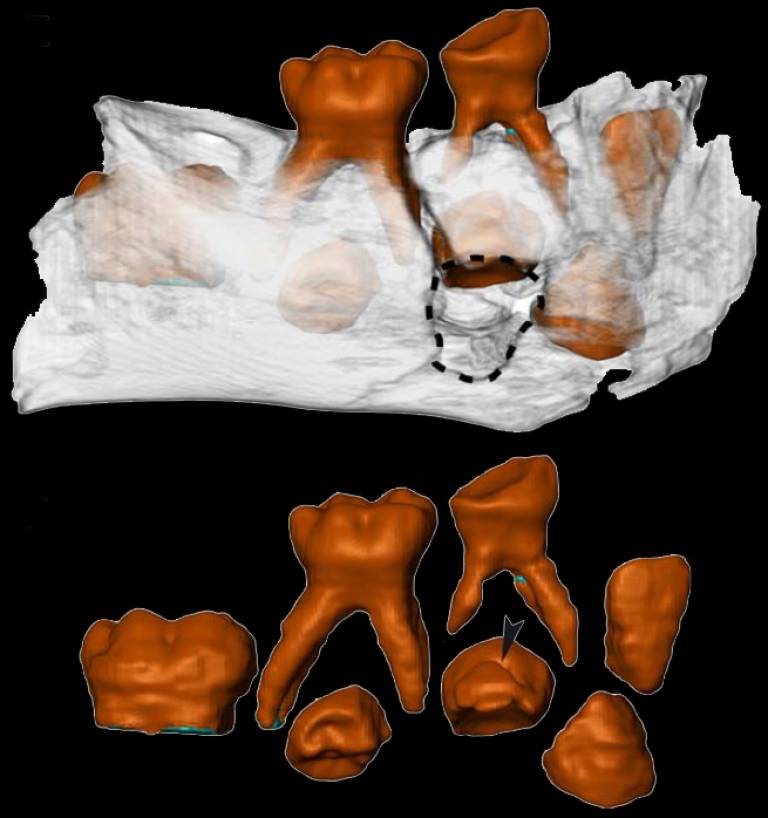A 1.7 million year old Ethiopian jaw fragment with teeth of a child - Latest Research
7 December 2016
The immature partial mandible GAR IVE from the c.
 1.7 Ma old Garba IV site at Melka Kunture (Upper Awash Basin, Ethiopia), the earliest human representative from a mountain-like environment, represents one of the oldest early Homo specimens bearing a mixed dentition. Following its first description, we extended the analytical and comparative record of this specimen by providing unreported details about its inner morphology, tooth maturational pattern and age at death, crown size, and tooth tissue proportions.
1.7 Ma old Garba IV site at Melka Kunture (Upper Awash Basin, Ethiopia), the earliest human representative from a mountain-like environment, represents one of the oldest early Homo specimens bearing a mixed dentition. Following its first description, we extended the analytical and comparative record of this specimen by providing unreported details about its inner morphology, tooth maturational pattern and age at death, crown size, and tooth tissue proportions.
Compared to the extant human condition and to some fossil representatives of comparable individual age, the GAR IVE mandible reveals absolutely and relatively thick cortical bone. Crown size of the permanent lateral incisor and the canine fit the estimates of H. erectus s.l., while the dm2 and the M1 more closely approach those of H. habilis-rudolfensis. Molar crown pulp volumes are lower than reported in other fossil specimens and in extant humans. The mineralization sequence of the permanent tooth elements is represented four times in our reference sample of extant immature individuals (N = 795).
The tooth developmental pattern displayed by the immature individual from Garba IV falls within the range of variation of extant human populations and is also comparable with that of other very young early fossil hominins. Taken together, the evidence presented here for mandibular morphology and dental development suggest GAR IVE is a robust 2.5- to 3.5-year old early Homo specimen.
Structural organization and tooth development in a Homo aff. erectus juvenile mandible from the Early Pleistocene site of Garba IV at Melka Kunture, Ethiopian highlands
Clément Zanolli, M. Christopher Dean, Yared Assefa, Priscilla Bayle, José Braga, Silvana Condemi, Metasebia Endalamaw, Blade Engda Redae, Roberto Macchiarelli
DOI: 10.1002/ajpa.23135
 Close
Close

